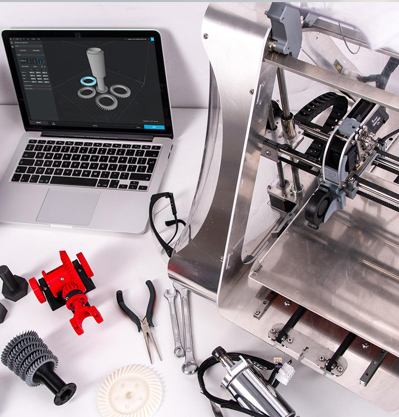
The GENERAL OBJECTIVE of the project entitled ‘Fostering the circular economy and low CO2 technologies through the additive manufacturing (3DCircle)’is to reduce the environmental and economic impact of materials used in 3D printing by developing new polymers of recycled origin, as well as new geopolymer mortars of low CO2 emissions. Besides, to carry out a practical application of them by developing complex formwork with plastics, starting a new niche in the prefabricated market of complex forms beyond vertical walls, from a circular economy context, looking for the maximisation of the life cycle of the materials employed by their reuse.
The SPECIFIC OBJECTIVES of the project are:
This Project is financed thanks to the National Program of R+D+I Oriented to Societal Challenges, though the R+D+I Projects 2020 funding call (PID2020-112851RA-I00).
Dra. Elena Blanco Fernández (UC)
Associate Professor. Construction Technology Applied Research Group (GITECO). Responsible for developing sustainable mortars apt for 3D printing.
Dra. Laura Castañon Jano (UC)
Assistant lecturer in the Fabrication Processes Area. Responsible for developing recycled plastics apt for 3D printing.
Dr. Carlos Alonso Cobo (UC)
Associate Professor. Head of the Structural Dynamical Analysis in Civil Engineering Research Group (GiaDe).
Dr. Álvaro Gaute Alonso (UC)
Responsible for structural monitoring in GiaDe Group.
Dr. Mohamed Boutouil (ESITC-Caen)
External expert in the field of sustainable concrete.
Dr. Branko Savija (TU Delft)
External expert in the field of concrete 3D printing.
Dr. Stewart Williams (Cranfield University)
External expert in the field of 3D printing technologies.
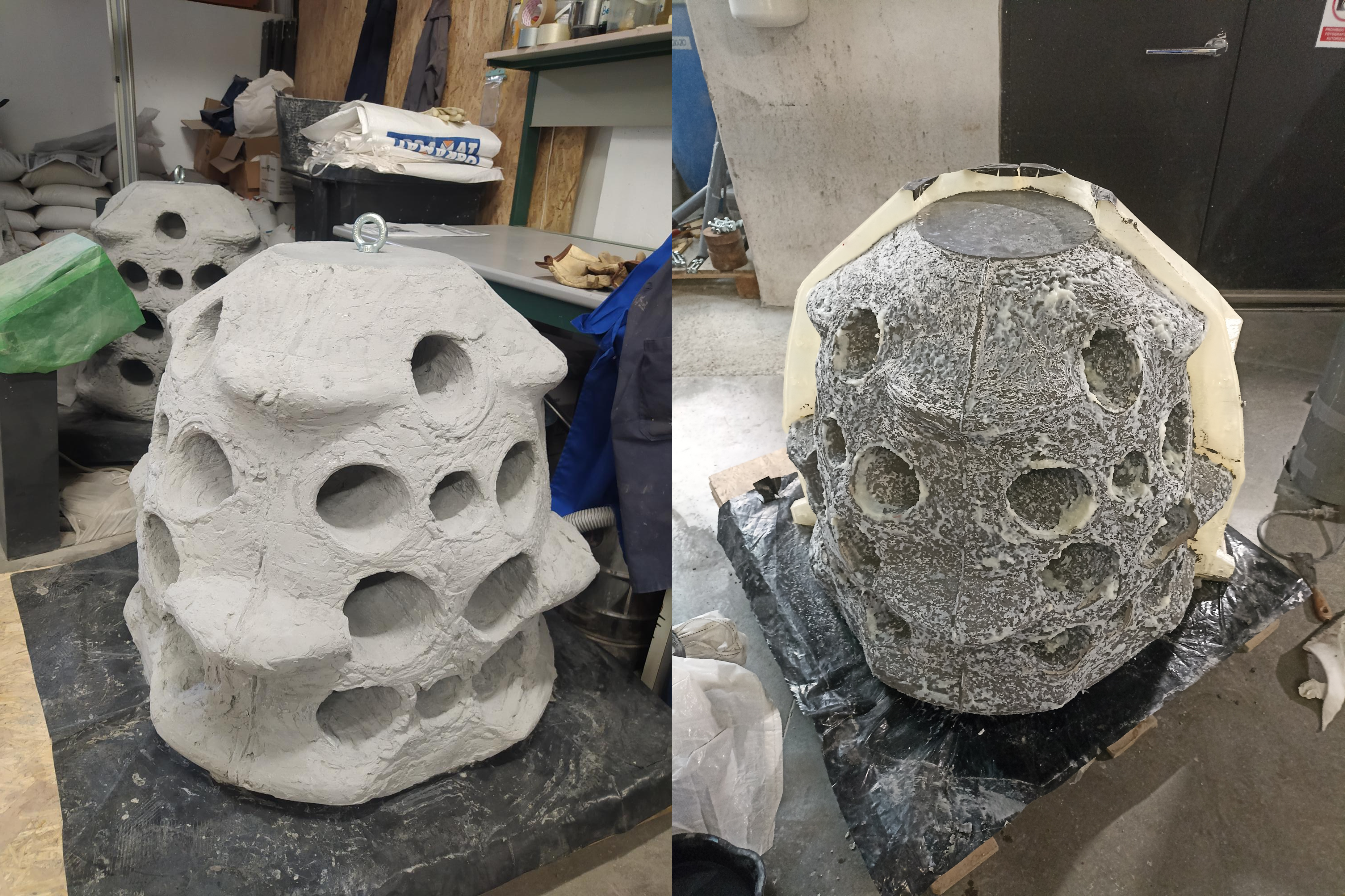
Two artificial reefs have been built using a 3D-printed PLA formwork. One of the reefs was made with a low-clinker cement mortar (left) and the other with a geopolymer mortar (right).
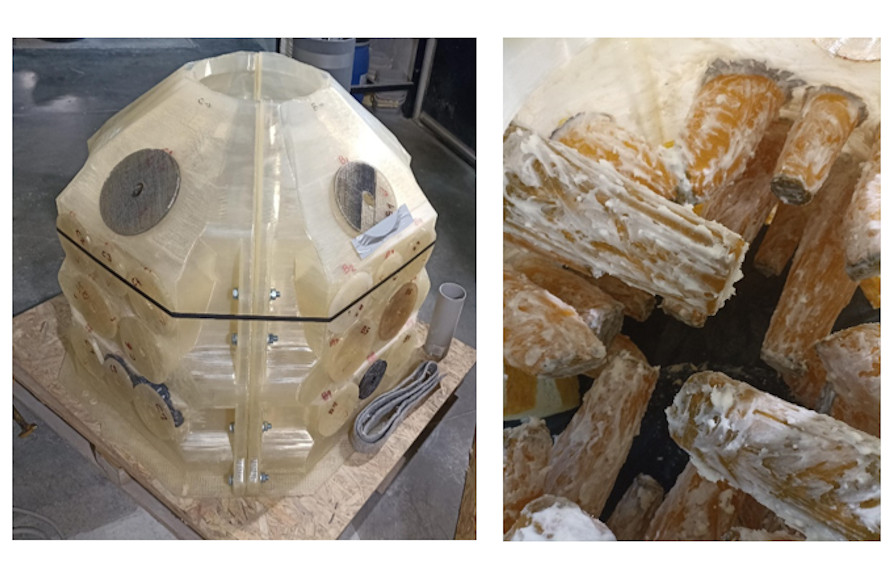
The PLA formwork was printed at real scale. This geometry fulfills the objectives since it has been fabricated with inclined walls of irregular geometry. To prevent the adherence of the mortar, a wax layer was applied. Also, in order to ease the withdrawal from the moulds, a diluted solution of alginate and starch in water was applied. Both are biodegradable materials easy to eliminate, the environmental impact in the seabed and the ecosystem in general in case there are remainders adhered to the reef surface.
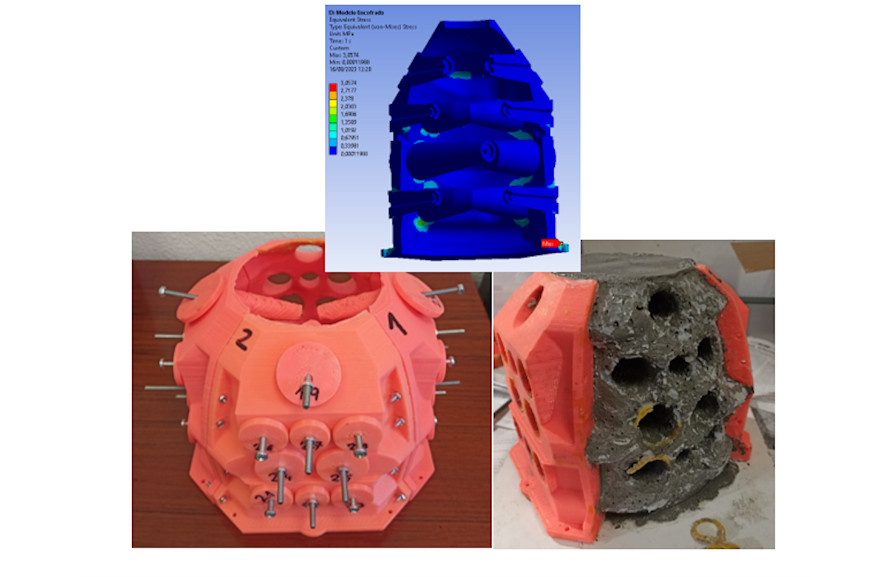
The formwork design fulfils two main criteria: to optimise the use of material (PLA), minimising the number of printing supports and the effective withdrawal of the formwork. The most efficient design fabricates the walls and the male independently. The males, conic, bear a bar anchored in the lowest end, warranting the withdrawal by this bar does not hamper the structural integrity. The structural resistance was assessed using Ansys, then it was printed at a 1:5 scale. Two pour tests have been carried out with different mortar mixtures.
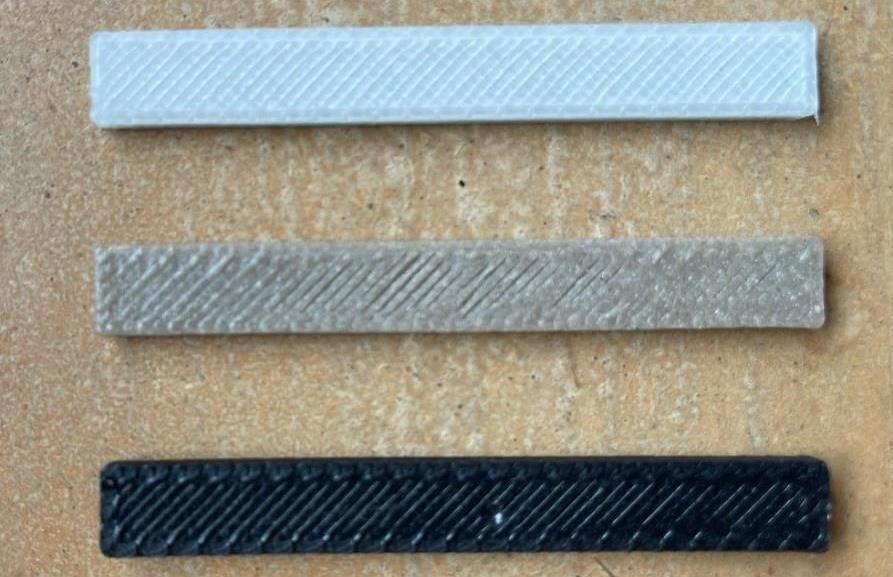
Filaments have been produced through extrusion using PLA and PETg as polymer bases. Additionally, various materials, which are by-products of different industries, have been introduced in powder form. Specifically, glass powder, sea shell powder, and metal powder have been incorporated at 10% and 20% by weight to each. Significant results, such as the improvement of PETg's tensile properties with the addition of these fillers and the improvement of PLA's flexural properties with the incorporation of 20% by weight of metal, have been found.
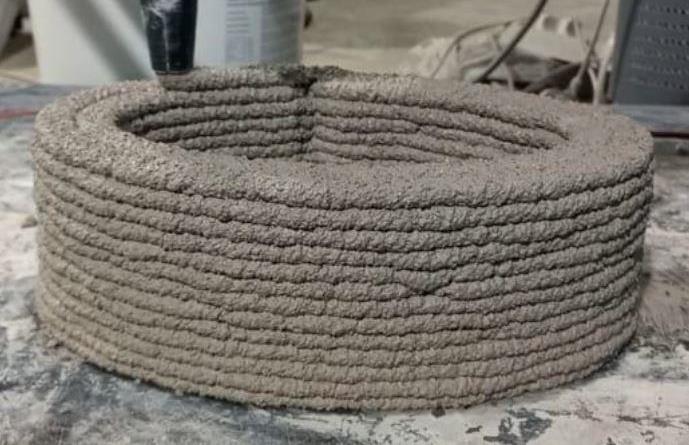
A new geopolymer apt for 3D printing has been developed consisting of a combination of slags and sodium carbonate. This mortar can reduce by 50% the environmental impact of standard mortar containing Portland Cement maintaining the same strength and cost. Furthermore, the mortar shows good durability when immersed in water.
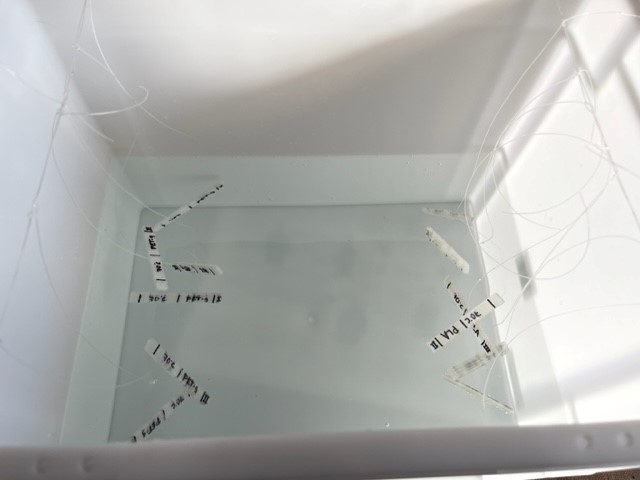
Degradation that the polymeric matrices of the formworks (PLA and PETg) could suffer due to the conditions of exposure to concrete and to high temperatures has been studied. For this purpose, the flexural properties are obtained after one week of exposure to a NaOH solution with water, pH 13, at three different temperatures: 50, 60, and 70℃. This is aimed at replicating the situation of the formwork during curing. It is observed that PETg does not lose maximum bending strength, while PLA undergoes a hydrolysis process.
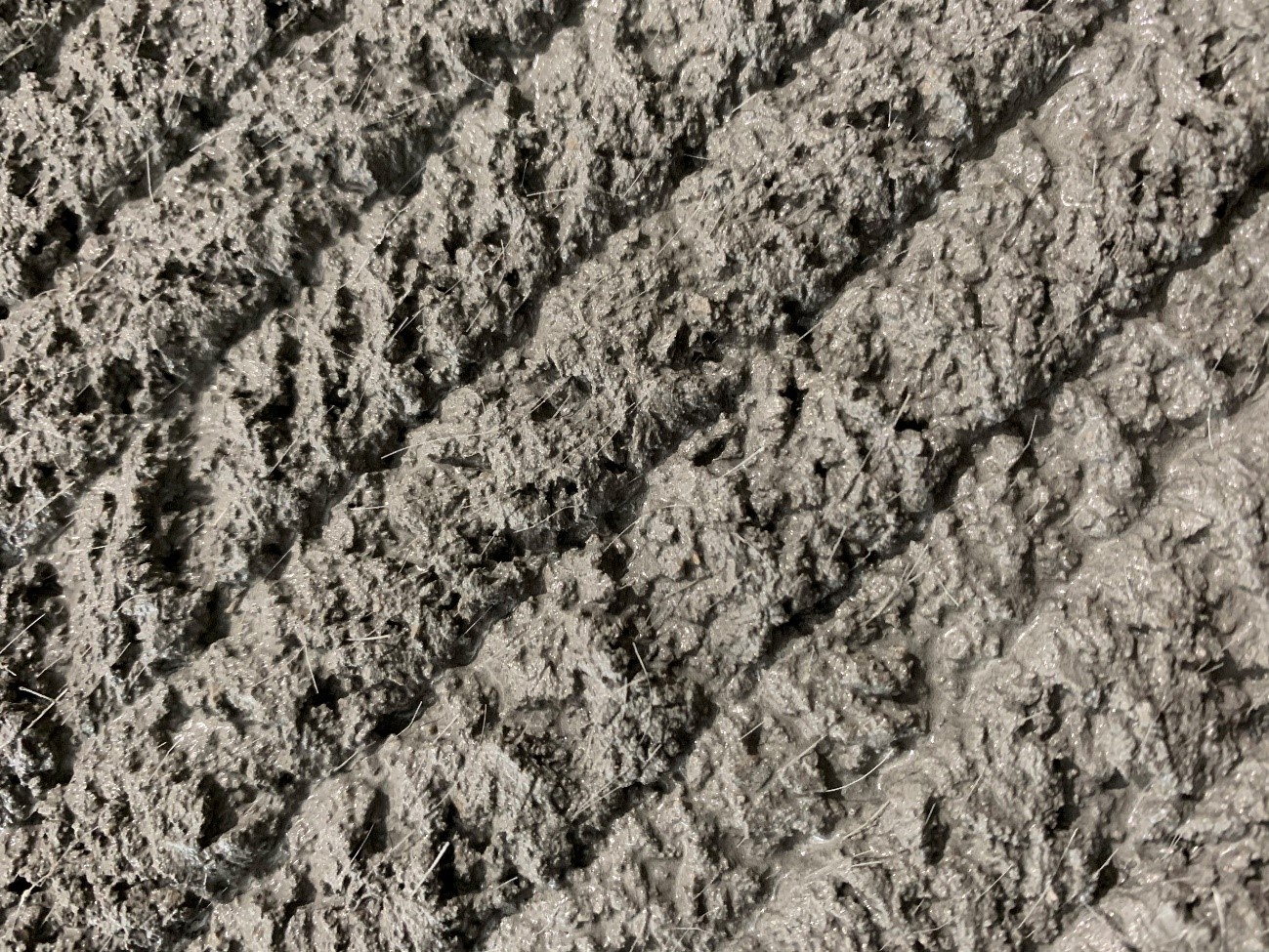
Mortars apt for 3D printing reinforced with fibers have been developed using 7 different type of fibers: zylon, aramid, carbon, glass, cellulose, textile and polypropylene, with different fiber lengths and proportions. The best fibers for mortar reinforcement considering 4 criteria (cost, printability, environmental impact, strength) are: glass, carbon and cellulose.
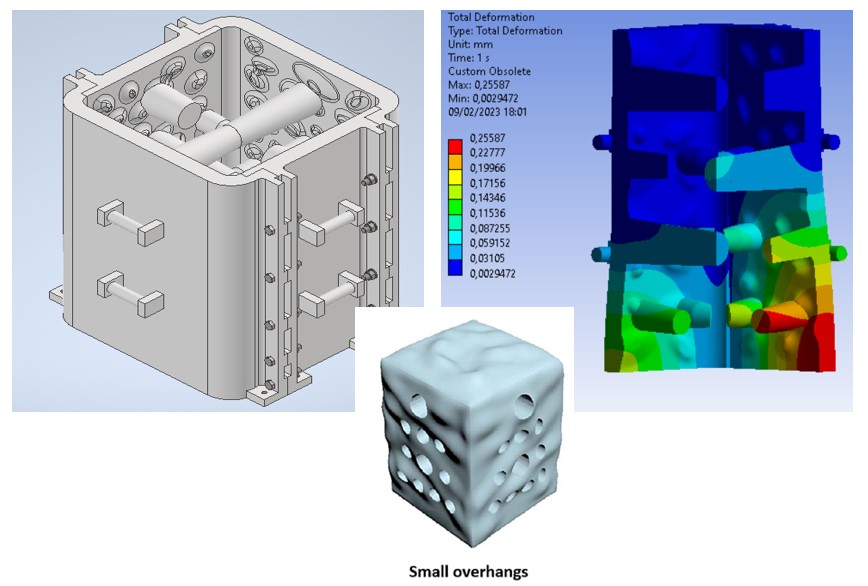
Taking the geometry of one of the reefs designed for the 3DPARE Project as a starting point, the formwork design has been carried out in the CAD software Inventor. This consists of 4 walls, which are joined by inserting 5 bolts in each contact area, equipped with handles to facilitate the formwork removal. Using the Ansys finite element software, the optimal thickness and infill percentage have been determined to meet the demanded requirements of resistance, maximum deformation, costs and printing times.
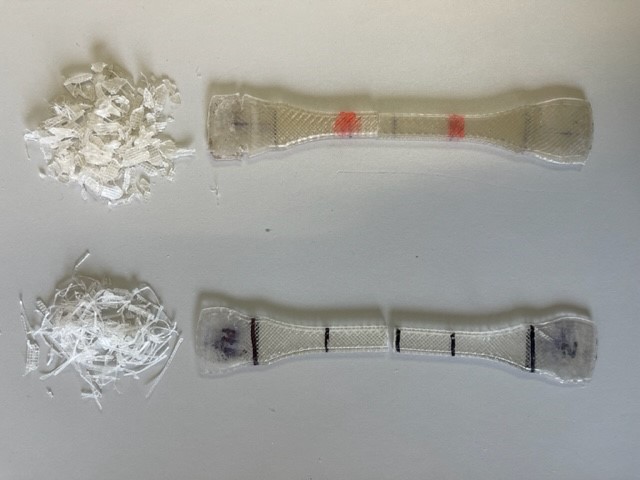
The feasibility of reusing 3D printed parts for the creation of filament and being used in a new printing process has been studied. For the extrusion of the filament in the successive cycles, parts already 3D printed in PLA with glass powder have been crushed. With this new filament, new test pieces have been created for their respective tests and mechanical characterization, thus checking the degradation of the material. A total of three recycling cycles have been achieved.
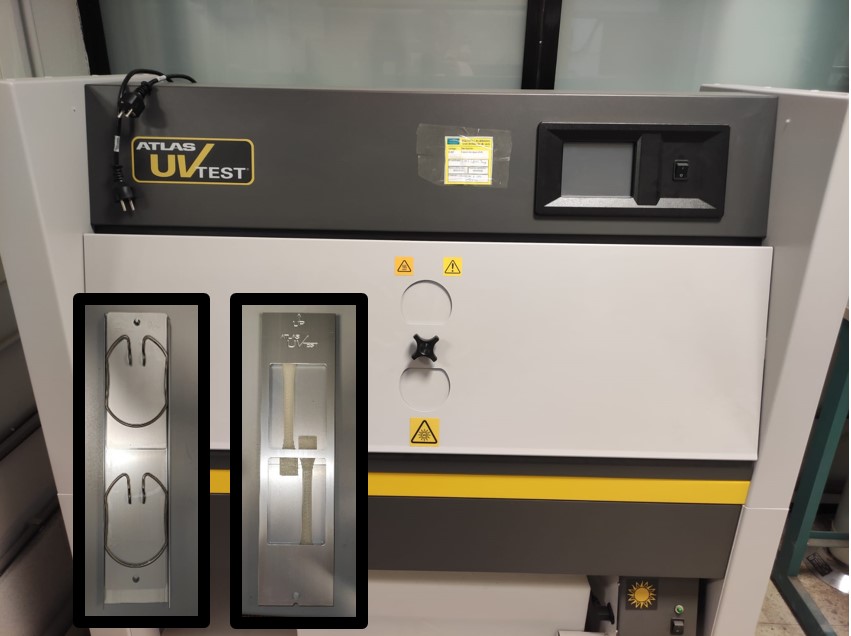
An analysis of the degradation of PLA loaded with glass powder has been carried out with the exposure of the specimens to UV rays. For this purpose, its tensile behaviour is studied after exposure for 430 hours, which would be equivalent to about 36 hours outdoors in reality. No loss of maximum tensile strength is appreciated.
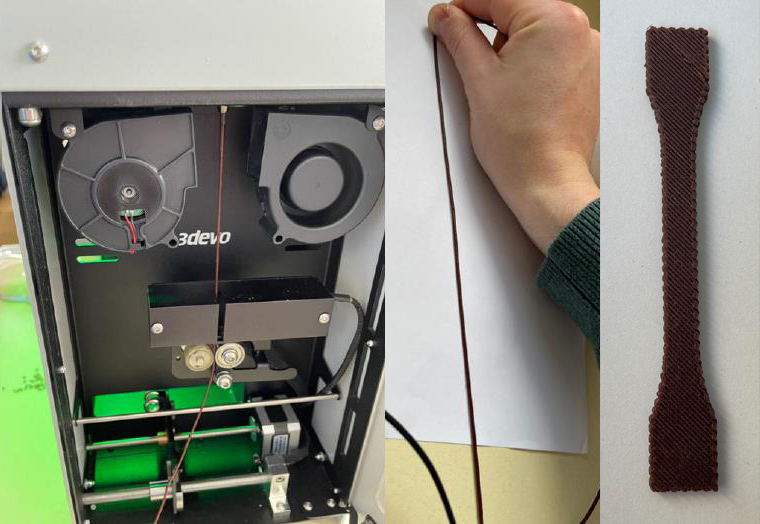
First extrusion tests of filament carried out with the new 3DEVO extruder. PLA + almond shells filament has been produced obtaining a continuous thread that is apt for 3D printing.
Dra. Elena Blanco Fernández (UC)
E.T.S. Ingenieros de Caminos, Canales y Puertos
elena.blanco@unican.es
For any questions or comments please feel free to contact us.